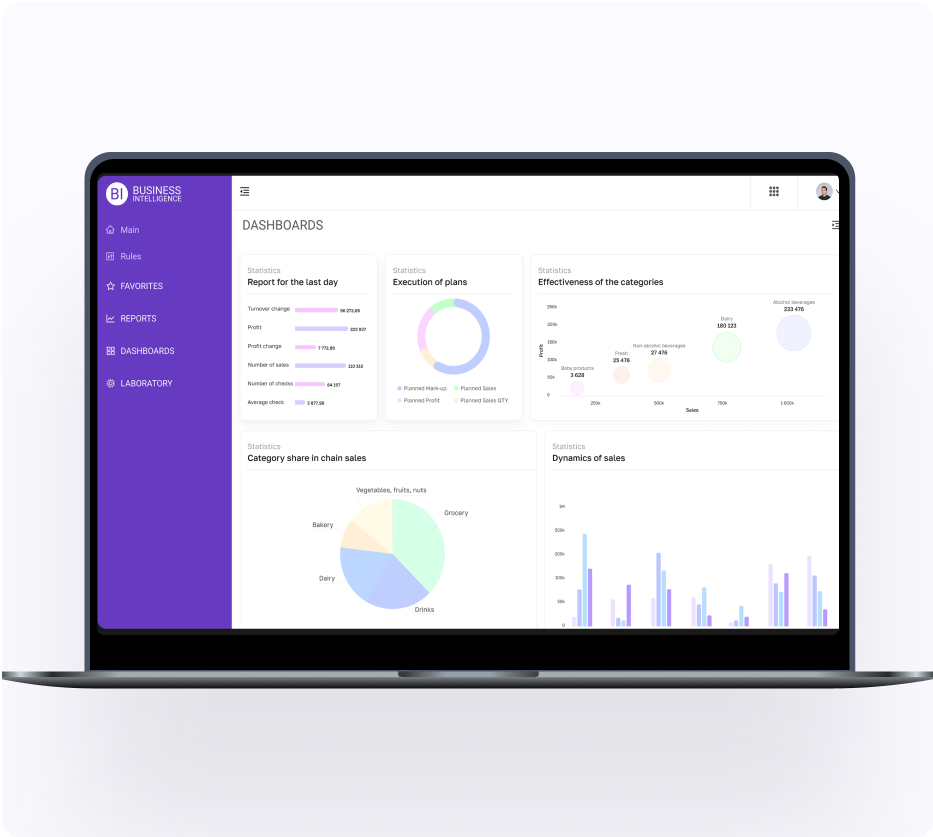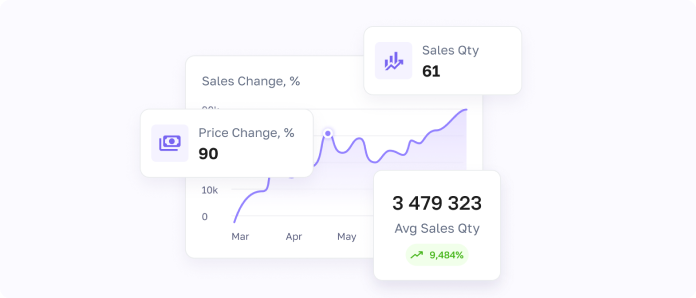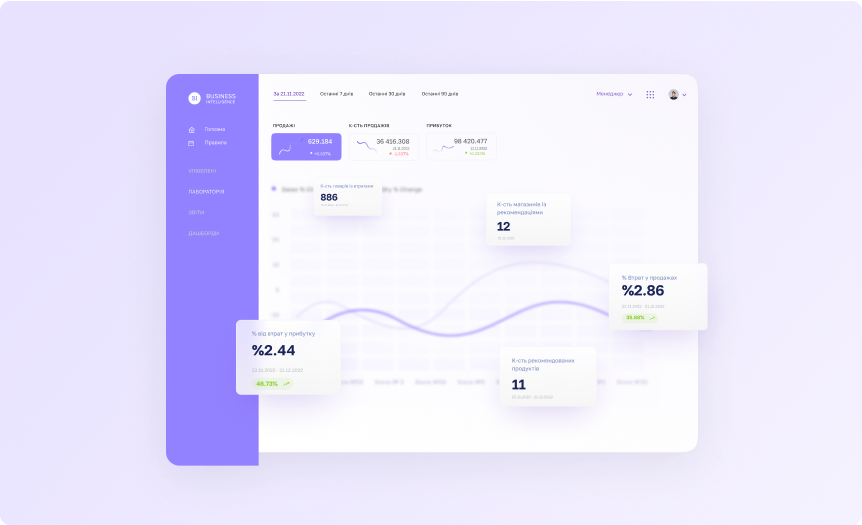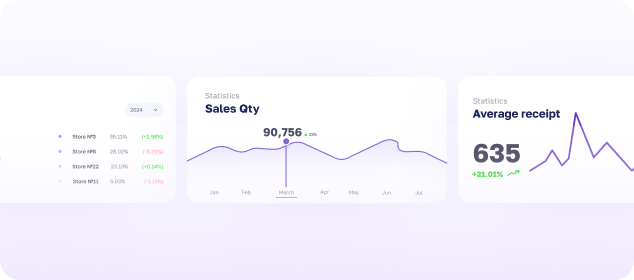Wypróbuj gotowe raporty w wersji demo za darmo
Już dziś możesz wypróbować ponad 30 gotowych raportów, kreator pulpitów nawigacyjnych i skorzystać z kreatora formuł do indywidualnych obliczeń!


Dowiedz się, ile faktycznie przynosi Twój towar: kalkulator szybko obliczy kluczowe wskaźniki finansowe dla handlu detalicznego. Pomoże to określić, które towary rzeczywiście generują zysk, a które obniżają ogólną rentowność.


Gotowe raporty pokazują pełny obraz sprzedaży: według produktów, kategorii i marek, liderów SKU oraz pozycji, które obniżają rentowność.
Więcej informacjiJuż dziś możesz wypróbować ponad 30 gotowych raportów, kreator pulpitów nawigacyjnych i skorzystać z kreatora formuł do indywidualnych obliczeń!



